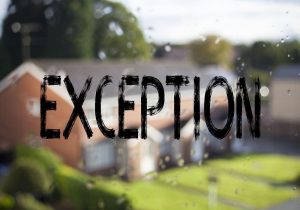Did you know that real estate market and house price trends follow the seasons in many housing markets across the US? If this is true in your market of choice for investment property, when is the best time to invest in real estate?
While it’s not always black and white when it comes to timing and real estate investing, national housing data points to two times of the year that mark the best season to buy a house: fall and winter.
Why Fall and Winter?

Most real estate investors know that spring is the busiest time of year for the market. More property listings are popping up every day and homebuyers find that spring/summer is the best time of year to buy a house and relocate. But these are the exact conditions that make most housing markets hot seller’s markets during this time.
On the other hand, when it comes to the fall and winter, markets tend to look a lot more like a buyer’s market. There are a few trends that make this the best time to invest in real estate:
Fewer Buyers on the Market= Less Competition
While this is a general trend, it’s pretty common to see fewer homebuyers out in the market house hunting during the fall and winter. As mentioned, for the average person, the best time to buy a house is actually during the spring or summer. This isn’t because they get better real estate deals or find discounted property. It’s because it makes more sense to move when school and universities are off.
Not only that, but it isn’t always convenient to view real estate property during the winter. Add to that the element of the holidays. People rather spend their time celebrating, visiting family, and relaxing than worrying about buying a house.
Even the average real estate investor tends to avoid the housing market in the winter. Almost everyone sees this time as a vacation- not a time to be looking for investment properties. This means two things:
- Homes for sale stay on the market longer
- There is less competition over homes
In fact, the chief economist at Realtor.com says that typically, there is 50-60% more housing inventory when compared to the property buyers during this time of year. So even though some sellers may pull their investment properties and homes off the market, a real estate investor will still have plenty of options as there are fewer buyers to lose property to.
Related: How to Find Investment Properties and Start Making Money by 2019
Less Competition= Better Real Estate Deals
With fewer property buyers out there looking for the best real estate investments and homes, you can land price cuts and more affordable investment properties. A study by NerdWallet found that in autumn, property sale prices drop by an average of 2.96% in the 50 metro areas that were studied. In January and February, properties cost 8.45% less than they do in June and August.
With less competition, there are no bidding wars and sellers who still have their properties for sale on the market for one reason or another are no longer receiving multiple offers on a house. This means as the property buyer, you have more negotiating room and price cuts are more likely to happen in a market that follows real estate seasonality trends. Essentially, you may be able to save thousands of dollars if you buy investment property during these seasons.
Don’t miss out on these great real estate deals! Click here to start your search for investment property.
Better Real Estate Deals= Extra Perks
Don’t forget that with the negotiating power in your hands, you can ask for special contingencies on the investment property. Sellers during this time are more willing to pay for closing costs and maybe even a few repairs as their days on market keeps increasing. So cheaper property is not all you’ll be getting out of the deal during the best time to invest in real estate.
January: The Absolute Best Time to Invest in Real Estate

Not only did the chief economist at Realtor.com say that January and February are the best time of the year to buy a house in the study by NerdWallet, but this study proved it as well. Using national real estate data from the Federal Reserve, Census Bureau, and Zillow, here are the stats on the winter real estate market in January:
Percentage of Property Selling Above the Listing Price: 23%
Median Sales Price at Closing: $254,914
Median Days on Market before Closing: 104
Compared to the rest of the months of the year, January had the best stats. Fewer properties were sold above the listing price, the median sales price was relatively affordable, and the days on market was high, putting more pressure on sellers. Making it in the top 6 months that are the best time to invest in real estate in the same study were October (#3), November (#4), December (#6), and February (#2). This study essentially backs up the idea that real estate seasonality can be witnessed across many US housing markets and autumn and winter are the best time to buy a house for investing.
Trends of the 2018/2019 Fall and Winter Real Estate Market
You might be wondering how these studies apply to the hot real estate market of 2018. The US housing market is generally a seller’s market as it stands now. However, there are two major trends of the 2018/2019 winter real estate market that will favor buyers this season.
A Drop in Housing Inventory Decline Rate
Realtor.com reported that there was a 2% increase in active listings in the US real estate market in October 2018. While inventory decline is still an issue, more investment property listings can mean more choices during the winter. So while typically inventory is low as sellers choose to list during the spring, this fall/winter real estate investors will find they have more choices than usual. And because many buyers will still prefer not to take advantage of the best time to invest in real estate, there will likely still be less competition.
An Increase of Price Cuts on Investment Property
The best time of year to buy a house typically brings with it price cuts. However, if you’ve been following real estate trends of this past year, you might think that with the high price appreciation, price cuts are impossible this time of year. That’s actually not the case at all.
Zillow found that in June of 2018, 14% of all property listings in the nation underwent a price cut, and that was in the best time to sell! As these real estate market trends have generally continued since June, it’s likely even more and even steeper price cuts will be happening this season.
So if you were thinking that perhaps the 2018/2019 season would be an exception, it seems there is more going on in the market that makes this the best time to invest in real estate.
Exceptions to Real Estate Seasonality

Not every single real estate market follows the same trends. The best time of year to buy a house in one market may be the worst time in another. For example, Southern California’s property prices don’t fluctuate with seasons too much. In other instances, something like a natural disaster or an economic downturn throw seasonal trends off-balance. There could even be more demand during the winter if a neighborhood receives a lot of tourists, leading to higher prices and more competition over investment property.
So the key here is to perform real estate market research on the city/neighborhood where you plan to buy investment property. The best resources for this are real estate websites, like Mashvisor. At Mashvisor, you can track the median property prices of different neighborhoods in many cities across the US and watch how they fluctuate to plan your move. You can use our heatmap to find neighborhoods with the best real estate deals when prices drop.
To get started with your real estate market research, click here.
You can also consider turning to a real estate agent for further insight into your market of interest.
Related: Finding Income Properties Using a Heatmap
5 Best Places to Invest in Real Estate for 2018/2019 Fall and Winter Season
Because not every market will be the best place to buy investment property this season, it’s important to quickly find the places that are. Using a combination of this study from Zillow and data from Mashvisor’s investment property calculator, here are the top 5 places to invest in real estate in the coming months. (This list is based on the number of price cuts, relative affordability, and cash on cash return.)
Orlando, FL
Median Property Price: $323,826
Traditional Rental Income: $1,588
Traditional Cash on Cash Return: 1.73%
Airbnb Rental Income: $2,256
Airbnb Cash on Cash Return: 2.96%
Airbnb Occupancy Rate: 59.46%
Columbus, OH
Median Property Price: $250,164
Traditional Rental Income: $1,283
Traditional Cash on Cash Return: 1.59%
Airbnb Rental Income: $2,336
Airbnb Cash on Cash Return: 4.04%
Airbnb Occupancy Rate: 53.41%
Minneapolis, MN
Median Property Price: $353,530
Traditional Rental Income: $1,757
Traditional Cash on Cash Return: 1.48%
Airbnb Rental Income: $2,738
Airbnb Cash on Cash Return: 3.48%
Airbnb Occupancy Rate: 61.18%
Las Vegas, NV
Median Property Price: $373,022
Traditional Rental Income: $1,317
Traditional Cash on Cash Return: 1.44%
Airbnb Rental Income: $2,905
Airbnb Cash on Cash Return: 4.84%
Airbnb Occupancy Rate: 58.83%
Charlotte, NC
Median Property Price: $387,111
Traditional Rental Income: $1,469
Traditional Cash on Cash Return: 1.14%
Airbnb Rental Income: $2,450
Airbnb Cash on Cash Return: 2.73%
Airbnb Occupancy Rate: 54.66%
Note: Be sure to check Airbnb regulations in the above cities before investing in short term rentals. And remember, the cash on cash return values above are averages for the city. Click here to find investment properties with higher CoC return.
Finding the best investment property then is all about location and time. Right now, armed with this list, you have both! But because finding an investment property can take a lot of time, you need the fastest way. Mashvisor has the answer. Start your 14-day free trial with Mashvisor now and analyze property using data similar to what you see above. Don’t miss out on the best time to invest in real estate!
Learn More: How to Find Investment Property for Sale Quickly and Easily